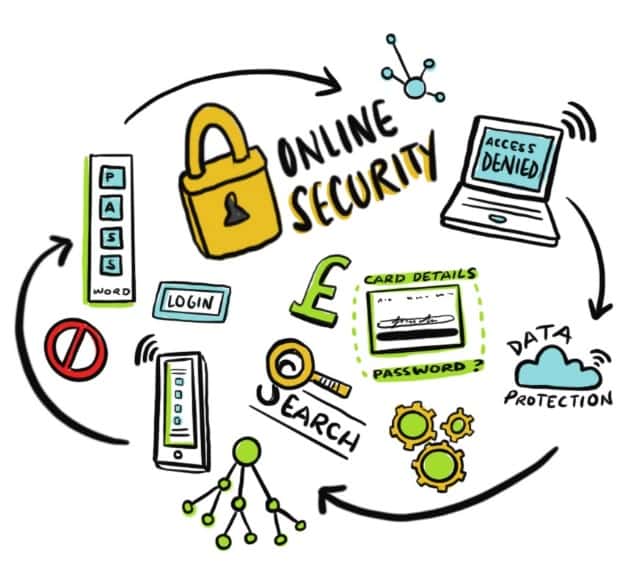Is This Link Safe? Your Ultimate Guide to Secure Browsing

In today's digital age, the question "Is this link safe?" has become more crucial than ever. With cyber threats lurking around every corner of the internet, it's essential to arm yourself with the knowledge and tools to protect your online journey. This comprehensive guide will walk you through the importance of link safety, common threats, and how to effectively determine if a link is secure using cutting-edge tools like ClickSafe.
The Growing Importance of Link Safety
As we increasingly rely on the internet for work, shopping, and entertainment, the need for vigilance has never been greater. Cybercriminals are constantly devising new ways to exploit unsuspecting users through malicious links. These threats can lead to identity theft, financial loss, and compromised personal data.
Did you know? According to a recent study, phishing attacks increased by 220% during the COVID-19 pandemic, highlighting the urgent need for better online security practices.
Common Threats Associated with Unsafe Links
Before we dive into how to check if a link is safe, let's explore some of the most common threats you might encounter:
- Phishing scams: Deceptive emails or websites that mimic legitimate sources to steal your personal information.
- Malware distribution: Links that, when clicked, download harmful software onto your device.
- Drive-by downloads: Malicious code that automatically downloads when you visit an infected website.
- Clickjacking: Concealing hyperlinks beneath legitimate clickable content.
Understanding these threats is the first step in protecting yourself online. Now, let's explore how you can determine if a link is safe.
How to Check if a Link is Safe
1. Use a Reliable Link Safety Checker
One of the most effective ways to verify a link's safety is by using a dedicated link checker tool. ClickSafe, for example, is a powerful browser extension that analyzes websites in real-time to protect your money, time, privacy, and peace of mind.
ClickSafe offers several key features:
- Terms & Conditions Simplified: Get concise summaries of important points, including your rights and obligations.
- Security & Technical Assessment: Identify SSL certificate issues, outdated software, and potential malware.
- Transparency & Ethical Check: Ensure the site isn't using deceptive practices or predatory schemes.
- User Feedback Analysis: Access summarized reviews and reports from other users.
2. Examine the URL Carefully
Before clicking on a link, take a moment to examine the URL:
- Look for "https://" at the beginning, which indicates a secure connection.
- Check for misspellings or slight variations of well-known domain names.
- Be wary of URLs that use numbers in place of letters or have unusual extensions.
3. Utilize Safe Search Features
Many search engines, including Google, offer safe search options that can help filter out potentially dangerous websites. Enable these features in your browser settings for an added layer of protection.
4. Leverage Browser Security Tools
Modern browsers come equipped with built-in security features. Keep your browser updated and pay attention to any warnings it displays about potentially unsafe sites.
Best Practices for Maintaining Online Security
While tools like ClickSafe are invaluable for checking link safety, it's important to cultivate good online habits:
- Stay informed: Keep up-to-date with the latest online security threats and best practices.
- Use strong, unique passwords: Employ a password manager to create and store complex passwords for each of your accounts.
- Enable two-factor authentication: Add an extra layer of security to your important accounts.
- Be cautious with email attachments: Don't open attachments from unknown sources.
- Keep your software updated: Regularly update your operating system, browser, and security software.
The Power of AI in Link Safety
Artificial intelligence is revolutionizing the way we approach online security. Tools like ClickSafe leverage AI to provide real-time analysis of websites, offering a level of protection that was previously unimaginable.
"ClickSafe has become my go-to tool for vetting unfamiliar online stores. It's like having a personal shopping guardian!" - Rachel T., ClickSafe user
By analyzing vast amounts of data, including user feedback, technical specifications, and historical information, AI-powered tools can quickly identify potential threats and provide users with actionable insights.
Conclusion: Your Path to Safer Browsing
In an era where digital threats are ever-present, asking "Is this link safe?" before clicking is not just prudent—it's necessary. By utilizing powerful tools like ClickSafe, staying informed about potential threats, and following best practices for online security, you can navigate the web with confidence.
Remember, your online safety is in your hands. Take control of your digital journey today by downloading ClickSafe and making link safety checks a part of your daily routine. With the right tools and knowledge, you can enjoy all the benefits of the internet while minimizing the risks.
Get started with ClickSafe today and browse with peace of mind!




